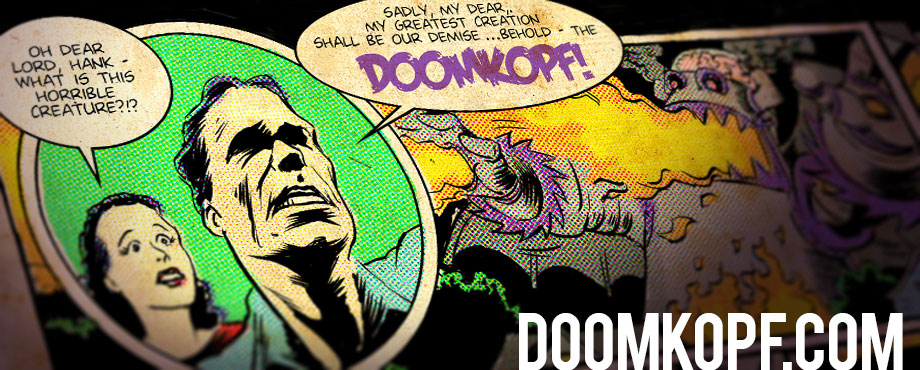They’re playin us on both screens…
There are certain things that should go unsaid. One of them is “I love Longshot.” But see below for an example of me violating this very protocol. But the other, more heinous, one is “somewhere I have the Nick Fury movie starring David Hasselhoff recorded off TV.” My skin crawls at the very thought that once upon a time, I had faith in such a thing. I remember that I didn’t even record “Generation X” when it became a television movie, and it wasn’t as bad. No really. I caught the last half of it, and it was a made-for-Fox movie – exactly what it promised to be.
It’s funny … these two films, one released in 1996 (Gen X), the other in 1998 (Fury), harkened back to a certain era in Marvel history. Aside from the 1986 infamous flop “Howard the Duck” – which somehow still survives as a punchline – Marvel never really had a theatrical release of any of its properties, right up until “Blade” in 1998. This is bearing in mind the fact that “The Punisher” and “Captain America”, while intended for theatrical release, soared into shelves in the nice little Twilight Zone of direct-to-video.
This did not prevent Marvel from making television movies. No, it probably should have, but it didn’t. It all started with “The Incredible Hulk,” the two-hour pilot to the television show of the same name. Of course, they couldn’t have Gamma bombs and the like – this was a television budget, after all. Instead, David Banner (they don’t call him Bruce?) was a clinical psychologist studying the affects of adrenaline and flight-or-fight on human beings. Somehow, mothers lifting cars to save their sons segued into Banner shooting himself with gamma radiation and turning into Lou Ferrigno in green body paint. I kid, a lot, but this really wasn’t bad, or at least not “Captain America” bad.
And when I say “Captain America” bad, I only wish I was talking about Matt Salinger’s 1990 flop. No, kids, in a much stranger time, a time we’ll call 1979, someone thought a Captain America television movie, or maybe even two, was the best course of action. But instead of Steve Rogers, just make him some clod. Oh, and instead of a skull cap, give him a blue and white motorcycle helmet with a visor on the front. And if he has the helmet, he should have a motorcycle too. Also, he should drive it into over a shark pit while Richie and Potsie cheer him on and Mrs. Cunningham fears that he won’t make it.
Just the previous year, Marvel had used soap-opera production values to propel “Dr. Strange” to the small screen, an interesting property given that this was in a time of “Dark Shadows,” bar none the best soap opera of all time. This potentially interesting franchise was never picked up, however, and the only time I’ve seen it on video was 12 years ago in a Sun Coast Video in Denver. Sometimes I regret not plopping down my allowance for that, other times I remember this kind of impulse shopping is the reason I keep a copy of “Strange Brew” hidden out of sight in my apartment.
With “The Incredible Hulk” rising in popularity in the late 1970s, it was inevitable that the TV series would spin off into a few other movies. The series was eventually cancelled, but in the late 80s three movies were released that marked big screen appearances for some Marvel characters. “Trial of the Incredible Hulk” featured Daredevil AND the Kingpin, while “The Incredible Hulk Returns” had an appearance by everyone’s favorite long haired blonde outside of Fabio, Thor.
Sam Raimi’s films may have been awe-aspiring, or at least entertaining, but they weren’t the first foray into the web slinger’s celluloid world. Capitalizing off the success of “Hulk,” Marvel licensed Spider-Man out. CBS responded with an out of shape and pushing 30 man named Nicholas Hammond, gave him some spandex and web shooters and ensured him a corner in Hell, a corner reserved for Sci-Fi Channel filler series. Jerry O’Connell and the rest of the “Sliders” will be there soon enough. Yes, there was the TV series – but like “Hulk,” there was the pilot. Unlike “Hulk,” the pilot was ridiculously bad. This is not just in 1970s-to-2005 hindsight. This is in the kind of way that emblazens Nick Hammond’s love-handles into your head where they can never truly be washed out. Yes, he looked the part of Peter, kind of, but what he lacked was Peter’s personality – or any trace of personality, for that matter. Uncle Ben was nowhere to be seen. So basically, that made this spidey all power, no responsibility, the same dry motivation of the blandest character in comics, Superman. Then they followed it up with two other television movies, and Marvel set themselves back 20 years.
“Power Pack” were never a particuarly popular franchise, try as Marvel might. Maybe it was the dull origin; maybe it was that when their buddy Franklin Richards joined them, his codename was Tattletale, or maybe it was the heinous horse thing they hung out with. Whatever it was, it’s shocking that at least five years after the Power Pack weren’t popular, NBC opted to release a “Power Pack” movie. They spared us the horse thing or Tattletale, though.
The trend hasn’t really ended. Let’s not forget the fate of “Man-Thing,” another potentially interesting project turned into murky z-film.
So complain if you will about Brett Hackner directing the third X-Men, or Topher Grace playing Venom. Just keep in mind the way things were for Marvel before “Blade” or “X-Men.”
